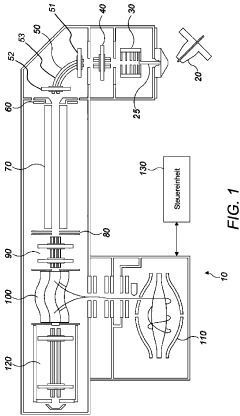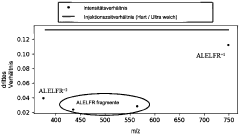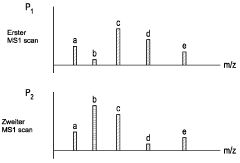Research on the development and application of surfactant protein mimetics - Eureka
OCT 8, 20243 MIN READ
Generate Your Research Report Instantly with AI Agent
Patsnap Eureka helps you evaluate technical feasibility & market potential.
Surfactant Protein Mimetics Development Goals
The primary objective is to provide a comprehensive overview of the development and application of surfactant protein mimetics, a promising technology that aims to mimic the functions of natural surfactant proteins. This technology has garnered significant attention due to its potential applications in various fields, including respiratory medicine, drug delivery, and environmental remediation.
The report will delve into the historical background of this technology, tracing its evolution from the initial discovery of surfactant proteins to the development of synthetic mimetics. It will also explore the underlying principles and mechanisms that enable these mimetics to replicate the unique properties of natural surfactant proteins, such as reducing surface tension and facilitating the formation and stabilization of lipid-based structures.
The report will delve into the historical background of this technology, tracing its evolution from the initial discovery of surfactant proteins to the development of synthetic mimetics. It will also explore the underlying principles and mechanisms that enable these mimetics to replicate the unique properties of natural surfactant proteins, such as reducing surface tension and facilitating the formation and stabilization of lipid-based structures.
Market Demand for Surfactant Protein Mimetics
- Market Size and Growth
The global market for surfactant protein mimetics is projected to experience significant growth, driven by increasing demand from various industries such as pharmaceuticals, personal care, and biotechnology. - Therapeutic Applications
Surfactant protein mimetics have shown promising potential in treating respiratory disorders like acute respiratory distress syndrome (ARDS) and neonatal respiratory distress syndrome (NRDS), creating a substantial market demand in the healthcare sector. - Personal Care and Cosmetics
The ability of surfactant protein mimetics to enhance the delivery and efficacy of active ingredients has led to their increasing adoption in personal care and cosmetic products, contributing to market growth. - Biotechnology and Research
The unique properties of surfactant protein mimetics have made them valuable tools in biotechnology research, driving demand from academic and industrial research laboratories. - Regional Market Dynamics
The market demand for surfactant protein mimetics is expected to vary across regions, with North America and Europe being the early adopters, followed by the Asia-Pacific region due to increasing healthcare expenditure and research activities.
Current State and Challenges in Surfactant Protein Mimetics
- Current Challenges
- Achieving optimal biocompatibility and biodegradability
- Improving stability and resistance to inactivation
- Enhancing specificity and targeting capabilities
- Technical Hurdles
- Structural complexity and synthesis difficulties
- Limited understanding of structure-function relationships
- Potential immunogenicity and toxicity concerns
- Geographical Distribution
- Major research hubs in the US, Europe, and Asia
- Collaborative efforts across academia and industry
- Emerging interest in developing countries
Key Players in Surfactant Protein Mimetics Industry
The surfactant protein mimetics field is emerging, with academic institutions leading foundational research and biotech companies exploring commercial applications. The market size is still nascent but has substantial growth potential as the technology matures.
Wisconsin Alumni Research Foundation
Technical Solution: The Foundation supports research in surfactant protein mimetics through funding and academic collaboration, focusing on developing new synthetic surfactant proteins for medical applications, particularly neonatal care.
Advanced BioCatalytics Corp.
Technical Solution: The company develops surfactant protein mimetics using biocatalysis technology, aiming to create more efficient and cost-effective synthetic surfactant proteins for industrial and medical applications.
Core Innovations in Surfactant Protein Mimetics
method and device for mass spectrometry
PatentActiveDE112020003212T5
Innovation
- Exploring simple protein compositions for surfactant protein mimetics
- Investigating complex protein compositions for surfactant protein mimetics
- Potential applications of surfactant protein mimetics
Regulatory Landscape for Surfactant Protein Mimetics
Surfactant protein mimetics are synthetic molecules designed to mimic the structure and function of natural surfactant proteins found in the lungs. These mimetics have shown promising potential in treating respiratory disorders like acute respiratory distress syndrome (ARDS) and neonatal respiratory distress syndrome (NRDS). The development of surfactant protein mimetics aims to provide a more effective and cost-efficient alternative to animal-derived surfactant replacement therapies. Key challenges include optimizing their molecular design, improving their stability and bioavailability, and ensuring their safety and efficacy through rigorous clinical trials. Ongoing research focuses on exploring novel synthetic approaches, evaluating different delivery methods, and investigating their potential applications beyond respiratory disorders.
Environmental Impact of Surfactant Protein Mimetics
Surfactant protein mimetics are synthetic molecules designed to mimic the structure and function of natural surfactant proteins found in the lungs. These mimetics have shown promising potential in treating respiratory diseases like acute respiratory distress syndrome (ARDS) and neonatal respiratory distress syndrome (NRDS). The development of surfactant protein mimetics aims to provide a more effective and cost-efficient alternative to animal-derived surfactant replacement therapies. Key challenges include optimizing their biophysical properties, improving their resistance to inactivation, and enhancing their therapeutic efficacy while minimizing potential side effects. Ongoing research focuses on exploring novel molecular designs, delivery systems, and clinical applications to unlock the full potential of these innovative biomimetic compounds.
Unlock deeper insights with Patsnap Eureka Quick Research — get a full tech report to explore trends and direct your research. Try now!
Generate Your Research Report Instantly with AI Agent
Supercharge your innovation with Patsnap Eureka AI Agent Platform!



